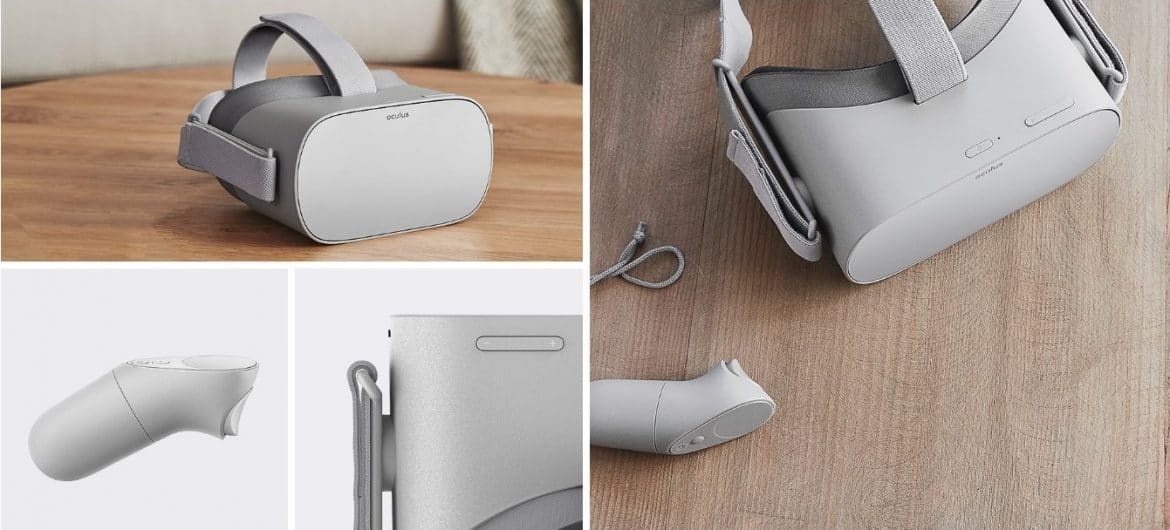
XR Talks is a weekly series that features the best presentations and educational videos from the XR universe. It includes embedded video, as well as narrative analysis and top takeaways.
Oculus Go (OG) was one of our picks for the most impactful factors that will define and accelerate XR in 2018. And we’re starting to get a glimpse. With a Q2 launch date — likely at May’s F8 conference — Oculus has begun showing off OG, starting at the recent GDC conference.
Our favorite review so far is from the always-detailed and insightful crew at Tested (video below). It’s evident that OG’s specs are impressive, especially for a $199 price tag. That includes field of view and build quality that outshines devices in its class, and even sometimes the higher-end Rift.
“For $200, it’s pretty amazing.” said Tested’s Jeremy Williams. “It’s in many ways already looking better than Rift, which is a two-year-old product. Visually it’s really impressive and I think everyone who puts this on, no matter where you’re coming from in VR, is going to be surprised.”

Going deeper, reduced God rays and screen lint result from those newer specs. There’s also solid lens quality including a bigger focal point than other headsets. And support for foveated rendering will allow developers to optimize processing towards the center of vision.
This is important given the device’s lower processing that will compel software efficiency. In fact Oculus CTO John Carmack believes that we’ll continue to hit hardware walls, including a theoretical limit to Moore’s law. So the magic will lie in software, and the above is one example.
Another example is frame rate. There will be options for 60 frames per second (fps) or 72. This will allow developers to optimize for different uses (again, software optimization). For example, 72 fps will have more frames but lessen performance and interactivity. So 60 fps can be used for gaming.
72 fps meanwhile is not coincidentally a multiple of 24 fps, which is the go-to frame rate for cinematic content. This tells us that OG will be purpose built as a lean-back video device. That makes sense because its 3 degrees of freedom (3DOF) tracking limits gaming capability.

Speaking of “purpose-built,” that’s OG’s headline. As we’ve examined, OG’s strength will be it’s dedicated construction as a VR device. By comparison, other headsets in its class like Gear VR, are run from a system (read: smartphone) that’s built for primary functions other than VR.
“They control the hardware, and they’re building their own version of Android to run the software,” said Tested’s Norman Chan. “They don’t have a lot of the filler that you would have on a smartphone and they can optimize performance on that hardware to actually get you that 72 [fps].”
But there are still a few question marks for OG, which require more time and usage to answer. Battery life is a big one. Content availability is also unknown but it’s likely that OG will access Oculus Home and Gear VR’s library. That will be a big adoption driver, per content’s importance.

OG’s strength also lies in its value: You’re getting a device worth more than its price tag. That’s due to Oculus’ loss-leader pricing strategy that essentially subsidizes the device as an investment towards a longer-term platform strategy. It has Facebook-sized ambitions (and money) to do it.
That’s great for consumers but it only goes so far. It’s still a mid-tier device and will have some limitations including 3DOF tracking as mentioned. And other specs like processing are in the tier-2 range. This won’t be as much of an issue for VR newbies but it will be noticeable to the Rift crowd.
“I think coming from a Rift perspective, you’re going to be moving your head all the time and it’s going to be jarring” said Williams. “If you’re coming from the high end, it’s going to be something you have to acclimate to. If you’ve never tried VR before you’re gonna be fine with it.”
But that newbie market is what matters. With VR’s installed base at 26 million units, OG’s mission is to bring the medium to the mainstream — hence the price and user-friendliness. But we’ll have to continue seeing Carmack-esque optimization to get VR to Facebook’s goal of a billion users.
For a deeper dive on AR & VR insights, subscribe to ARtillry Intelligence Briefings, and sign up for the free ARtillry Weekly newsletter.
Disclosure: ARtillry has no financial stake in the companies mentioned in this post, nor received payment for its production. Disclosure and ethics policy can be seen here.
Header image credit: Oculus
